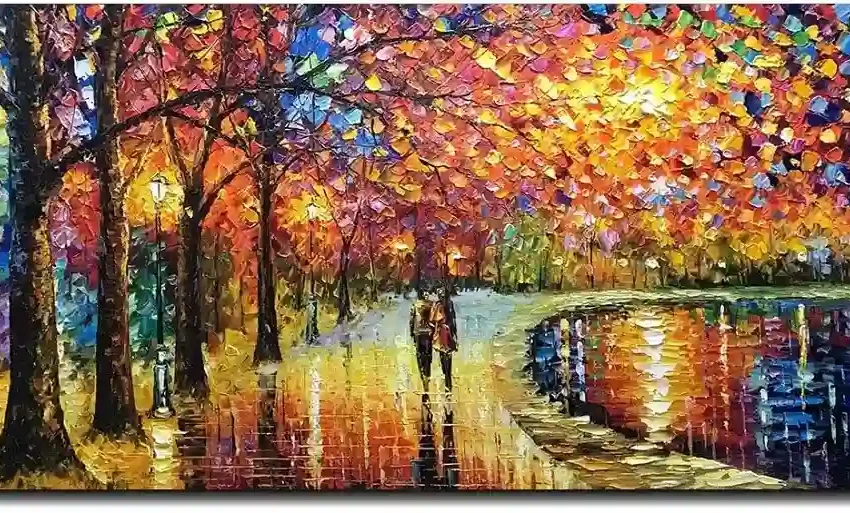
Pushing Color Boundaries: Experimenting with Unconventional Hues
In the world of art, color is a language all its own, capable of conveying emotions, moods, and stories with remarkable power. While traditional color palettes have their established roles and associations, artists who seek to push boundaries and challenge conventions often find themselves drawn to unconventional hues. In this article, we will explore the exciting realm of experimenting with unconventional colors in art, the impact it can have on artistic expression, and how it can ignite a new level of creativity.
Breaking Free from Tradition
Traditional color theory has long provided a foundation for artists to create harmonious and visually pleasing compositions. Colors like red, blue, and yellow—the primary colors—along with their secondary and tertiary counterparts, have been the cornerstone of art for centuries. These colors evoke familiar emotions and symbolisms, making them a safe choice for many artists.
However, some artists are driven by a desire to break free from the constraints of tradition and explore the vast spectrum of colors that exist beyond the familiar. They seek to challenge the norms and expand the language of color, introducing unconventional hues that can provoke thought, emotion, and dialogue.
The Emotional Impact of Unconventional Hues
Unconventional hues have the power to evoke emotions and responses that traditional colors may not. For example:
- Intrigue and Mystery: Unusual shades like deep maroon, teal, or chartreuse can create an aura of mystery and intrigue in a piece of art. Viewers are drawn in, curious to unravel the story behind the colors.
- Discomfort and Tension: Colors that deviate from the norm can also create a sense of discomfort or tension. The juxtaposition of unconventional hues can challenge viewers’ expectations, sparking conversations and contemplation.
- Joy and Celebration: Bright, unexpected colors can evoke feelings of joy, celebration, and exuberance. Artists who use unconventional hues to convey positivity and vitality inject their work with a sense of vibrancy and life.
Famous Artists Who Pushed Color Boundaries
Throughout art history, there have been several famous artists who boldly experimented with unconventional colors. One notable example is Vincent van Gogh, whose use of vibrant, non-traditional colors in works like “Starry Night” and “Sunflowers” captured the essence of his emotional experiences and struggles.
Another renowned artist, Wassily Kandinsky, explored the spiritual and emotional aspects of color in his abstract works. His use of bold and unconventional hues challenged the art world’s perceptions of color and paved the way for abstract expressionism.
Cultural Influence on Color
Artists who experiment with unconventional hues often draw inspiration from diverse cultures and traditions. Colors that may be considered unusual in one context can hold deep cultural significance in another. Exploring these cultural connections can enrich an artist’s palette and deepen the layers of meaning in their work.
The Role of Technology
Advancements in technology have expanded the possibilities for experimenting with color in art. Digital art tools offer artists the ability to work with an extensive range of colors, some of which may not exist in the physical world. Artists can create luminous digital art that challenges our perceptions of color and reality.
Overcoming Challenges
Working with unconventional hues can present challenges for artists. These colors may not blend as smoothly, and their interactions can be unpredictable. Achieving the desired harmony and balance in a composition may require experimentation and a willingness to embrace the unexpected.
Additionally, artists may face resistance or criticism for their use of unconventional colors, as viewers may initially find them jarring or unfamiliar. However, this very discomfort can lead to a deeper engagement with the artwork, as viewers are compelled to explore their own reactions and interpretations.
Conclusion:
Experimenting with unconventional hues in art is an invitation to explore the vast and untapped potential of color. It challenges artists to think beyond the ordinary and create works that provoke thought, stir emotions, and challenge preconceptions. Whether it’s the use of unexpected shades or the fusion of contrasting colors, pushing color boundaries opens up a palette of possibilities that can lead to groundbreaking artistic expression. As artists continue to embrace unconventional hues, they expand the language of color, inviting viewers to embark on a visual journey that is both thrilling and thought-provoking.
